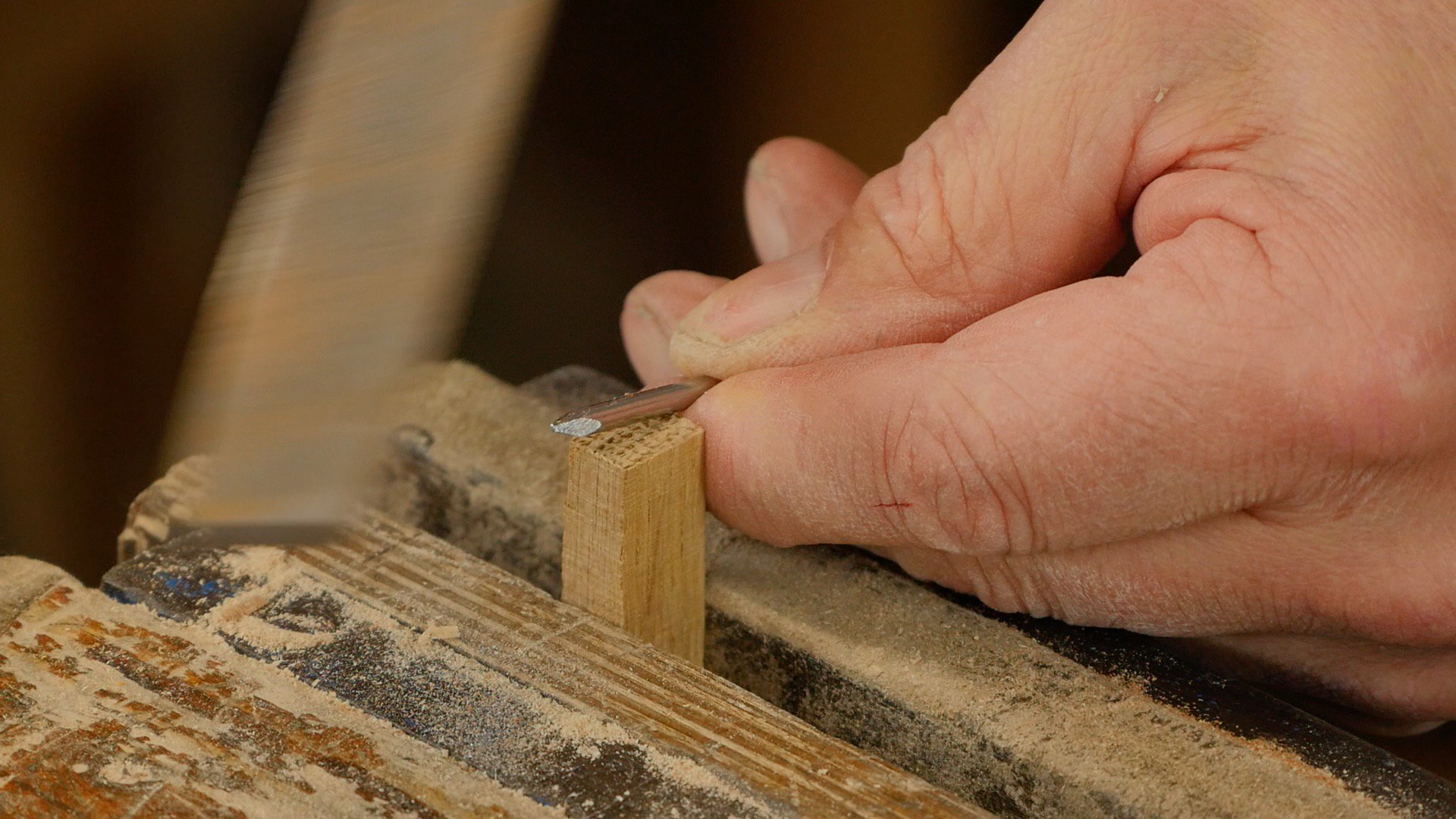Poor Man’s Drill Bit
Posted 5 April 2016
This is a free video, want to watch it? Just log into the site, and you can enjoy this video and many more!
Paul passes on a technique that he was shown many years ago, in which you use a nail to make a drill bit. This helps to avoid splitting and is used to pre-drill a piece of wood to the exact size of the nail you want to use in your project.


When I was serving my apprenticeship as a draughtsman many years ago one of the joiners where I worked was hitting some nails on the point with a hammer with the head resting on a piece of steel as an anvil. When I asked him what he was doing he answered “it helps to stop the wood splitting. with the point burred over the nail breaks through the fibres instead of forcing them to either side and spreading the wood.
We did the same thing at Theatre school in the mid-70s.
I have been using the hammered-head technique for 40 years with good results. In the shop I agree with the nail-to-drill technique for cleaner work. It also slows me down long enough to make better decisions about my next move.
I’ve never seen that before! What a great idea!
That trick has been passed down through at least three generations in my family. It works beautifully
I’ve used both techniques, but used the hammered tip primarily on pressure treated wood. I’ve also used the nail spinner technique…but I’ve never tried to sharpen the point. I can see where it would help . Thanks Paul.
Thank you for the lesson.
I wish I had known this years ago. It would have been so useful.
Brilliant! I was totally forgotten that my father used this technique in my youth.
I thought I was the only one who knew about that! Now if there was a video on the poor man’s brad nails. I make mine using rebar tie wire. Nailed 2×4’s together with it before.
I always used a finish nail, so there was no need to clip the head off. Works great.
I smash the end flat with a hammer on a piece of railroad track; this strain hardens and flattens the end. Then I file the fat area flush and sharp. My grandma (from Turkey) showed me this, but she may have learned it after she came to America.
Great idea,and thanks
Simple and clear… I´love this way to teach! Thank´s a lot
Will try this one soon.
My father taught me to put a nail flat on the board with the head at the place you want to hammer it in and with the pointy end towards the long end of the board. Tap the head with the hammer creating a little T-shaped dent. Then hammer the nail in the dent and the board will not split. This works as close as less then half a centimetre from the end of the board, depending on the thickness off course.
Don’t know if it also applies to harder woods but in soft wood like pine it works fine.